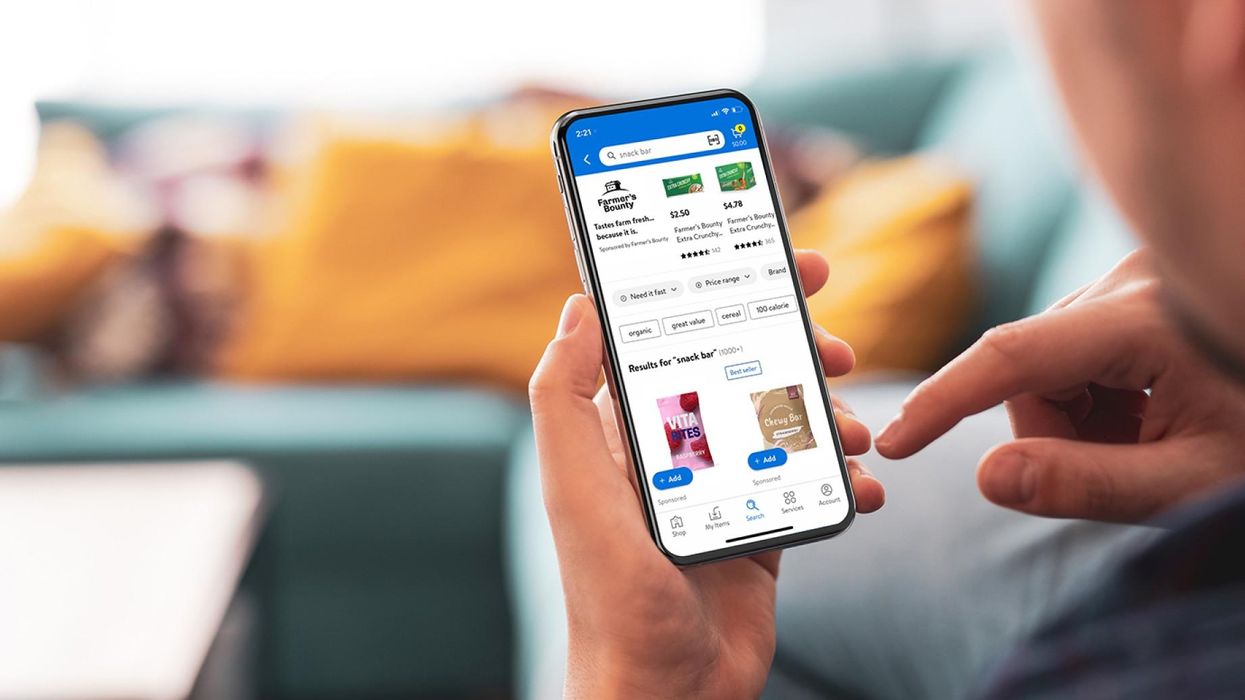The Walmart flywheel continues to grow.
The world’s largest retailer reported growth across its digital business on Nov. 15 in earnings for the third quarter of fiscal year 2023. Executives also detailed how those pieces fit together, and fed into the company's strategy to provide value at a time when cusotmers are looking to save money amid high inflation.
Key digital metrics from Walmart's earnings were as follows:
- Company-wide, 13% of sales for the year to date started on a digital channel.
- Walmart US ecommerce grew 16% year-over-year. That outpaces overall net sales growth of 8.5%.
- Walmart’s ecommerce marketplace, which includes third-party sellers, added 8,000 sellers in the third quarter. It now has 370 million SKUs. That number increased 50% in Q2.
- Walmart Connect, the retailer’s US advertising business, grew 40% year-over-year. The quarter saw the highest spend all year in sponsored search ads.
- Walmart+ memberships and the data business Walmart Luminate “continue to grow,” the company said, but did not offer specifics.
- International ecommerce sales were 23% of total sales, up 400 basis points year-over-, primarily due to Flipkart.
- Walmart China ecommerce sales grew 63%, and penetration reached 41% of sales.
- Sam’s Club ecommerce sales were up 20% year-over-year, with contributions from curbside pickup and ship-to-home.
'A different multiple'
Walmart CEO Doug McMillon described how the different pieces of the digital business all fit together to form the company’s flywheel.
“We're scaling our newer businesses and connecting them to our larger, established retail businesses, primarily by how we design digital interactions,” McMillon told analysts, according to a Seeking Alpha transcript. “One example is how our growth in ecommerce, especially the marketplace, fuels our ad business. More items and sellers drive GMV and improved customer satisfaction. And it also drives success in advertising. They're mutually reinforcing.”
The same architecture applies to the “atoms” side of ecommerce that moves an item to a customer’s door after a sale. Growing the marketplace in turn provides more opportunities to provide third-party sellers with fulfillment services from its advancing logistics network and last-mile delivery through its Spark driver platform and GoLocal delivery-as-a-service program.
As virtuous as it is, the concept of the flywheel is straight out of the Amazon playbook. However, it's important to note that Walmart believes its unique advantage lies in building across its massive footprint of physical stores and ecommerce. Executives were careful to talk about how the digital channels were part of an “omnichannel” business that could serve customers however and wherever they wanted to shop, as opposed to an all-digital business. It's also clear that grocery will continue to be a major driver of Walmart's business. The company is gaining share in the category, and it is proving to help lift Walmart overall as spending ticks down on other types of merchandise.
Nevertheless, it’s clear that executives see digital as the channel where the company can realize new scale. As CFO John David Rainey put it, not only are businesses like advertising, data services and fulfillment faster-growing , but they also bring higher margins.
“Hopefully, we look up a number of years from now and we've got a much more diverse and durable earnings stream that also there's a different multiple ascribed to those earning streams than what exists today. We're quite excited about the opportunity in front of us,” said Rainey, who joined the company this year from PayPal.
Inventory and inflation
As the country’s largest grocer and a retailer where many people turn for low prices on large, stock-up trips, Walmart is seeing the effects of inflation up-close. Fuel prices remain high, and the company describes food inflation as “mid-teens.” This is leading consumers to make “frequent trade-offs” and prioritize everyday essentials, said Rainey. This means consumers are trading down in categories like meat and poultry, baking goods, baby and dog food. Some customers are opting for private-label in larger numbers over the name brands.
In this environment, the company is seeing gains on multiple levels. Walmart has something for high-income consumers. More customers who make $100,000 or more are shopping for groceries at Walmart, with three quarters of share gain in the category coming from this demographic. Meanwhile, the penetration of the company’s private-label brands increased 130 basis points, showing that it also has options for people who want to take prices even lower. That speaks not just to how it can respond in the moment, but how it is built.
On the topic of the other great issue facing retail in 2022, Walmart has also improved its inventory position. It was among retailers facing a glut of inventory as a result of supply chain and forecasting issues that resulted in a pileup of goods moving from being stuck in transit to the backrooms of stores. For the quarter, inventory was up 13% for the quarter, and 12.4% for Walmart US. That’s down from around 26% last quarter. Inflation, rather than units, is driving about 70% of the increase, the company said.
In-stock levels remain “heavy” in American stores, said Walmart US President John Furner, but McMillon added that the merchandise causing the glut “is getting down to the point where we probably won't be talking about that going forward.”
Digital value
The priority on providing value amid inflation and the convenience of the digital business are tied together for Walmart.
With more high-income consumers coming to Walmart during tough economic times, the company wants to drive loyalty that could remain even when prices come down.
Walmart has tuned its shopping experience to this. Many of those new high-income customers are turning to Walmart for groceries, and they are also more likely to shop online. With updates on its app over the last year, Walmart has put general merchandise and food items all together. Coming to Walmart for one category may lead a shopper to leave with an item in another. So offering quality fresh food, apparel and home goods during this time can help Walmart “stand tall,” McMillon said, but the shopping experience at Walmart can play just as big of a role in the equation as the goods.
“We're focusing on earning repeat business from customers who are now shopping with us more frequently than before,” McMillon said. “For example, a strong presentation throughout fresh and apparel are priorities, along with executing pickup and delivery to create a delightful experience that saves them time. And in the case of Walmart US, it also means selling more Walmart+ memberships. As more people look to us for value, we want them to see that the experience of shopping with us is also compelling due to the new capabilities we develop.”
A late holiday surge?
Given its massive size and proximity to a large breadth of consumers, Walmart is well-positioned to see what’s coming next. For the crucial holiday quarter, the expectations lag behind the most recent results.
It expects net sales growth to slow to 3% over last year, which would be down markedly from 8.5% growth of this quarter. LIke Amazon before it, the company is taking a conservative approach to the holidays given the darkening economic picture.
“Despite a good start to Q4, our guidance assumes that the consumer could slow spending, especially in general merchandise categories, given persistent inflationary pressures in food and consumables,” Rainey said.
While a lot of the focus at Walmart and other retailers this fall has been on early holiday sales, McMillon said that price-sensitivity among consumers could lead to a surge right at the end of the holidays as people stretch dollars, as well.
“This will be one of those years where we're watching sales closely up until the last minute of Christmas Eve, and then we'll do a lot of business after Christmas,” he said.
Looking ahead past the quarter, Rainey indicated that the company is planning for inflation to remain “somewhat elevated.” The consumer is “stressed,” he said, and stimulus payment-boosted savings will recede the longer that prices remain high. In particular, inflation in dry groceries and consumables is expected to remain high.
"That's the area where we need to partner even more with our suppliers and come up with more creative solutions and try to do the best we can of relieving that pressure for customers and members," McMillon said.
At Walmart, that means a mix shift where groceries gain share while general merchandise lags will remain. But it’s also a time when the company believes its "value proposition really shines." That’s not just true in its ability to offer low prices, but in the growing assortment it is offering on its ecommerce marketplace.
“It shows you that not only are we providing products at the price point that customers want, we're providing additional products and assortment for them to buy,” Rainey said.












